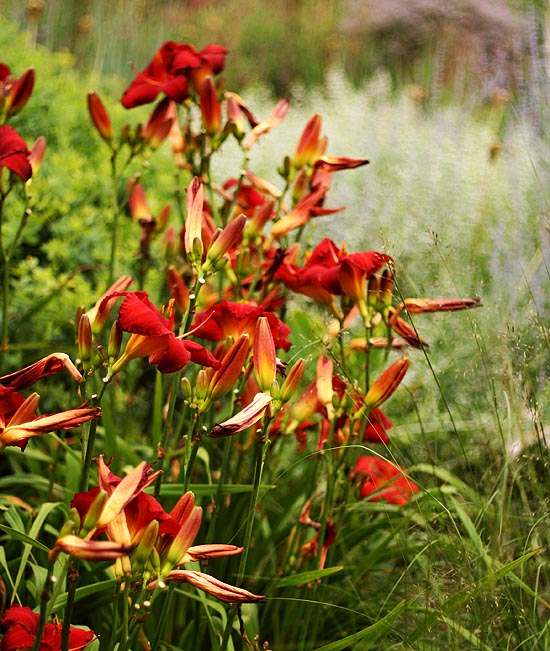The popularity of vegetable garden planting has grown dramatically the last few years. As people have discovered the pleasures of growing some of their own food, the popularity of planting flower gardens has moved to the background in the minds of many gardeners. Flower gardening isn’t devoid of merit, and a well executed flower garden can improve property values and create habitat for pollinators that vegetable gardens need. Read on to discover my top tips for planning a flower garden.
1. Location, location, location.

Hosta flowers via Ramon Gonzalez
If you’re dreaming of a flower garden where you walk through in the summer and pick flowers for your homegrown bouquet, pause and design your garden layout before you start digging. Investigate whether you have enough sunlight for a flower garden. Or if your garden is too shady for the majority of flowering plants. But don’t let shade stop you from planting for flowers. Many shade plants, like hostas, send up some beautiful flowers.
2. What types of flowers?

Daylilies via Ramon Gonzalez
Annuals are plants that gardeners usually grow for one season. Oftentimes they die during winter, or they’re pulled out of beds and containers after their flowering period has passed, and replaced with something else. Perennials are plants that come back year after year on their own with little interference by gardeners. A good flower garden has a mixture of both plants that are blooming throughout the growing season.
Here’s a list of flowers that are easy to find or grow from seed that I recommend you add to your flower garden.
Perennials
- Shasta daisy
- Butterfly bush
- Chrysanthemum
- Hollyhock
- Four O’clock
- Gloriosa daisy
- Roses
- Lavender
- Sea jolly
- Sedum “purple emperor”
Annuals
- Gomphrena
- Zinnia
- Dianthus
- Cornflower
- Snapdragon
- Strawflowers
- Sunflowers
- Calendula
- Cosmos
- Marigolds
- Nasturtium
- Pansies
- Cleome
- Petunia
- Celosia
- Salvia
- Geranium
3. Think beyond flowers.
If you’re planning on growing your own flower bouquets, think about growing plants for their foliage to fill out your floral arrangements. Some of the popular herbs that you grow in your kitchen garden would make excellent foliage plants, but some herbs also produce flowers that would look nice as cut flowers.
4. Controlling garden pests.
The primary goal of a flower is to attract pollinators. Their fanciful colors and alluring petals are also homing beacons for pests that will turn your carefully tended flower garden into a salad bar. Before you reach for any sprays or synthetic chemicals, look for natural ways to control garden pests.
5. Watering a flower garden.
Flowering plants require frequent watering. A few dry spells and flower buds will drop. Not enough water during the growing season and you’ll get stunted flowers that look little like the flowers you saw in the garden catalog. Think about installing a drip irrigation system on a timer, so you water directly where your plants are growing and waste as little water as possible. Garden soil that has been amended with compost will hold and release water better than soil that hasn’t been amended with compost.
Sitting down and planning a flower garden on paper (or on your computer) will help your garden get started on the right foot. Make sure you’re making note of a plant’s height. Shorter plants go in the front and taller plants go in the back to prevent them from shading lower-growing plants. Mixing annuals and perennials in your flower garden plan will ensure you have something blooming throughout the growing season. And don’t be afraid to add some vegetables and herbs to the mix. Some edible plants produce striking flowers that will stand out in your floral arrangements.
[box type=”shadow”]You might also enjoy our post on 5 fresh ideas for flower gardens.[/box]

Share tips, start a discussion or ask one of our experts or other students a question.
Already a member? Sign in
No Responses to “5 Top Tips for Planning a Flower Garden”